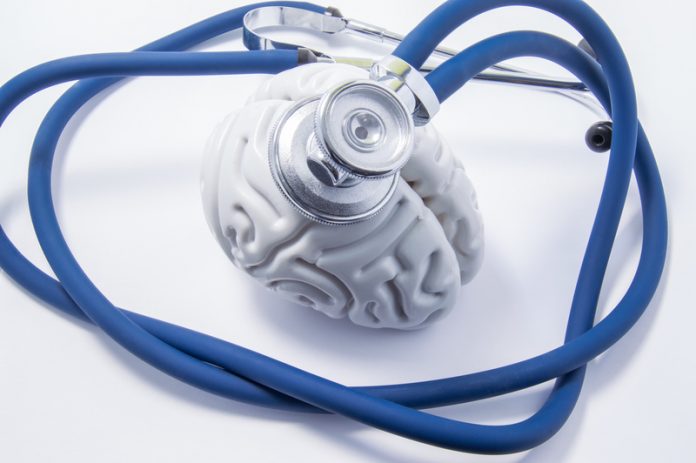Professor Dame Pamela Shaw explains how the National Institute for Health Research (NIHR) supports experimental medicine and translational research in neurodegenerative diseases
Neurodegenerative diseases – such as Parkinson’s, Alzheimer’s, motor neurone disease and multiple sclerosis – are increasing worldwide as the population ages. Disease-modifying therapies are urgently needed.
Our growing understanding of the neurobiology underlying these diseases has led to the discovery of novel potential therapeutic strategies by laboratory scientists. In England, the translation of these scientific discoveries into exploratory research studies in patients (experimental medicine), clinical trials and new treatments benefits greatly from central support provided by the National Institute for Health Research (NIHR).
The NIHR funds research infrastructure across the country that drives innovation and speeds up the rate of ‘pull-through’ of scientific discoveries from the lab and into patients. This support for experimental medicine includes Experimental Cancer Medicine Centres, Clinical Research Facilities and Biomedical Research Centres (BRCs). These University-Hospital partnerships mean that patients can benefit sooner from academic progress in some of the world’s top research institutes.
In Sheffield, we have the only BRC that focuses solely on experimental medicine for chronic neurological disorders. By working directly with the Sheffield Institute for Translational Neuroscience (SITraN), our centre develops preclinical discoveries into experimental medicine and early phase clinical trials.
Since establishing the NIHR Sheffield BRC in 2017, we have already had excellent examples of ‘pull-through’ alongside our work to gain a deeper understanding of disease mechanisms and to drive research into symptoms and new treatments. Taken together, this joined-up approach aims to improve the success rate of translating new therapies into the clinic.
As a neurologist, I think that we are beginning to see the start of a new era where we have powerful tools with which to address some of the most intractable and distressing diseases in medicine.
Translational drug trials and biomarker development
At SITraN we carried out the first drug screen in cells from patients with Parkinson’s disease, screening over 2000 compounds in high content imaging experiments more commonly used in cancer research. Our screening identified that ursodeoxycholic acid (UDCA), a drug used to treat liver disease, was able to reverse the mitochondrial dysfunction observed in cells from patients with Parkinson’s disease.
With support from our core BRC team, we have now started recruiting patients to a clinical trial of UDCA in Parkinson’s disease, led by Professor Oliver Bandmann. The UP (UDCA in Parkinson’s) study uses novel biomarker measures of drug activity, such as a magnetic resonance spectroscopy technique to measure energy levels in the brain, and wearable sensors to monitor patients’ activity in daily life.
A further example of pull-through from the SITraN drug discovery laboratory, this time with a commercial partner, is our research into the neuroprotective effects of an NRF2 activator. The NIHR Sheffield BRC is now working to develop reliable biomarkers of NRF2 activation that could support robust clinical trials of its neuroprotective effects in several neurodegenerative diseases, including motor neurone disease and Parkinson’s disease.
Stem cell transplantation for multiple sclerosis
Autologous haematopoietic stem cell transplantation (AHSCT) is a treatment approach that rebuilds patients’ immune systems using their own stem cells. It involves harvesting a patient’s stem cells from their bone marrow, then ablating their immune system with chemotherapy and repopulating their bone marrow with stem cells that have never interacted with their central nervous system. AHSCT for multiple sclerosis renders the disease inactive in the vast majority of relapsing-remitting patients (JAMA 2019).
Recently we had very encouraging news from the interim analysis of the Multiple Sclerosis International Stem cell Transplant (MIST) trial carried out in Sheffield, Chicago, Uppsala and Sao Paulo. Further research arising from this ground-breaking work is now taking place through Professor Basil Sharrack at the NIHR Sheffield BRC, including a trial funded by NIHR’s Efficacy and Mechanism Evaluation programme to compare AHSCT with alemtuzumab treatment across 19 sites in the UK. ‘Back-translation’ from patients back to the laboratory is underway to further refine and improve AHSCT treatment for patients with multiple sclerosis.
Gene therapy for motor neurone disease
The NIHR Sheffield BRC is supporting research into an experimental antisense oligonucleotide (ASO) gene therapy for patients with motor neurone disease linked to mutations in the SOD1 (copper-zinc superoxide dismutase 1) gene. The protein produced by the SOD1 gene is responsible for around 2% of cases of motor neurone disease. ASO therapy is designed to cancel out the mutated form of this protein.
The phase 1 experimental medicine study led from our BRC by me (European Chief Investigator) and Professor Chris McDermott (Sheffield Principal Investigator) has shown exciting early results and is now progressing into a pivotal regulatory trial sponsored by Biogen. A Biogen sponsored trial for the most common genetic cause of motor neurone disease, associated with changes in a gene known as C9orf72, is also now in set up.
The pull-through of gene therapy for motor neurone disease has been a long-term goal. It has been 10 years since SITraN’s Professor Mimoun Azzouz led one of two independent teams that used an engineered virus to replace a faulty gene in animal models of spinal muscular atrophy (SMA), a childhood form of motor neurone disease. This pioneering work helped to lay the foundation for the tremendous success of the clinical trial of viral-vector-based gene therapy for SMA. The pre-clinical work of Professor Azzouz and myself gave confidence that a gene therapy approach could potentially be successful for patients with SOD1- related motor neurone disease.
The SITraN and BRC teams in Sheffield are now working with AveXis to move viral-vector-based gene therapy for SOD1-related motor neurone disease towards being available to patients. The viral-vector based approach will complement the antisense oligonucleotide trial that is currently in the clinic.
A bright future
Until now Sheffield has been the sole site in the UK carrying out advanced treatment (gene therapy and stem cell) trials for motor neurone disease and multiple sclerosis, respectively, but these promising trials are set to expand.
We are fortunate to have a northern group of NIHR BRCs in Sheffield, Leeds, Manchester and Newcastle that can collaborate on experimental studies of novel treatments, and to have NIHR Clinical Research Facilities that can deliver such cutting-edge trials. Through the investment of the NIHR, we are bridging the pull through from pre-clinical scientific discoveries into experimental medicine and subsequently clinical research, translating innovative findings into real benefits for patients with neurological disorders.
Professor Dame Pamela Shaw
Director of the NIHR Sheffield Biomedical Research Centre
NIHR Senior Investigator
National Institute for Health Research (NIHR)











